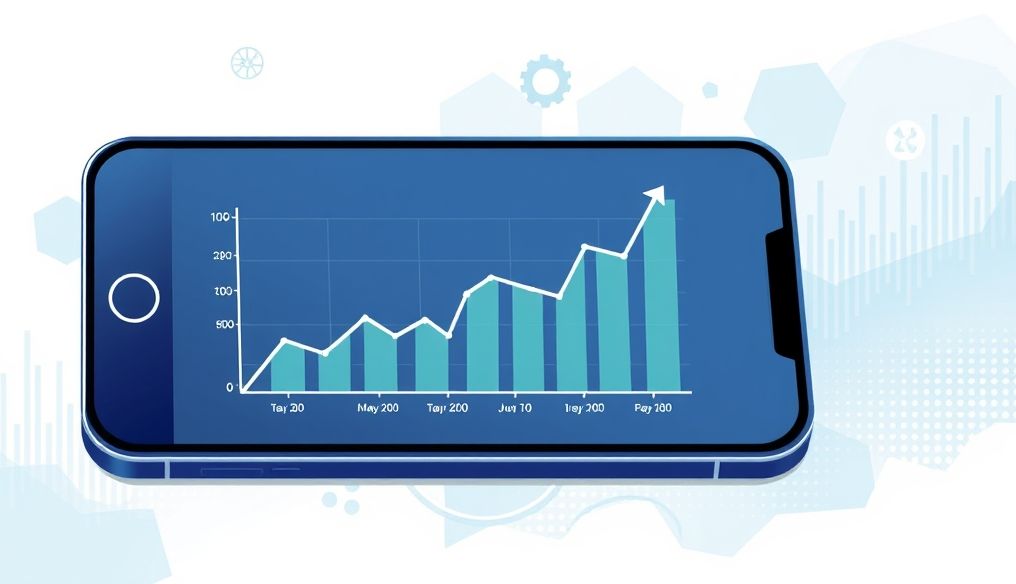Introduction: The Age of Smart Saving
Saving is no longer a boring routine task, but a smart and dynamic experience thanks to advances in digital banks. Automation, once considered just a tool to streamline operations, is now a key driver of personalization, allowing users to achieve their financial goals more efficiently. This article explores the concept of dynamic personalization in automated saving, and how digital banks are using this technology to provide personalized saving solutions that adapt to users' changing needs.
Chapter 1: What is Dynamic Personalization in Saving?
Dynamic personalization is the process of automatically adjusting saving strategies based on user data and financial behavior. Instead of relying on fixed saving plans, digital banks analyze users' spending patterns, income levels, and financial goals, and then adjust saving plans accordingly. This means that the amount saved, the frequency of saving operations, and even the investment tools used can change automatically in response to changes in the user's financial circumstances.
Chapter 2: How Does Dynamic Automated Saving Work?
Dynamic automated saving relies on a set of technologies and algorithms to analyze data and make decisions. These include:
- Big Data Analytics: Collecting and analyzing vast amounts of user data to identify patterns and trends.
- Machine Learning: Using machine learning algorithms to predict users' future financial behavior.
- Artificial Intelligence: Using artificial intelligence to make automated decisions about adjusting saving plans.
- Application Programming Interfaces (APIs): Connecting users' various accounts, such as bank accounts and credit cards, to provide a comprehensive view of their financial situation.
For example, if a user's income unexpectedly increases, the system can increase the automatic saving amount. Similarly, if a user encounters unexpected expenses, the system can reduce the saving amount or suspend it temporarily.
Chapter 3: Benefits of Dynamic Personalization for Users
Dynamic personalization offers many benefits to users, including:
- Improved Saving Rates: By automatically adjusting saving plans, users can achieve their financial goals faster and more efficiently.
- Reduced Financial Stress: By managing saving automatically, users can reduce the stress and anxiety associated with managing their finances.
- Increased Engagement: By providing a personalized and engaging saving experience, digital banks can increase user engagement and encourage them to save regularly.
- Greater Flexibility: Users can adjust their financial goals at any time, and the system will automatically adjust saving plans accordingly.
Chapter 4: Practical Examples from Leading Digital Banks
Many of the world's leading digital banks are adopting dynamic personalization strategies in automated saving. For example:
- Acorns: This app automatically invests the "spare change" from users' purchases.
- Digit: This app analyzes users' spending patterns and transfers small amounts to a saving account periodically.
- Qapital: This app allows users to create custom saving "rules," such as saving a certain amount each time they spend a certain amount.
In the Arab market, some digital banks have also started offering similar services, focusing on meeting the unique needs of users in the region.
Chapter 5: Potential Challenges and Risks
Despite the many benefits of dynamic personalization, there are some potential challenges and risks that need to be addressed:
- Data Privacy: Collecting and analyzing user data requires strong safeguards to protect privacy.
- Cybersecurity: Digital banks must protect users' data from cyberattacks.
- Algorithmic Biases: It must be ensured that the algorithms used in dynamic personalization do not contain biases that could lead to unfair outcomes.
- Regulation: Regulators need to develop appropriate regulatory frameworks to protect users in the age of automated saving.
Chapter 6: Strategies to Overcome Challenges
To overcome potential challenges and risks, digital banks can follow these strategies:
- Implement Strong Security Protocols: To protect users' data from cyberattacks.
- Use Anonymization Techniques: To reduce the risk of privacy breaches.
- Audit Algorithms Regularly: To ensure they do not contain biases.
- Collaborate with Regulators: To develop appropriate regulatory frameworks.
Chapter 7: The Role of Artificial Intelligence in Dynamic Personalization
Artificial intelligence plays a crucial role in enabling dynamic personalization in automated saving. AI algorithms can analyze vast amounts of data to identify patterns and trends that may not be obvious to humans. AI can also be used to predict users' future financial behavior, allowing digital banks to offer more personalized and effective saving plans.
Chapter 8: The Future of Automated Saving: Towards Hyper-Personalized Experiences
The future holds promises of even more personalized automated saving experiences. As technology continues to evolve, we can expect to see more innovations in this field, such as:
- Event-Based Automated Saving: Where saving plans are automatically adjusted in response to specific events in the user's life, such as getting a promotion or buying a new home.
- Saving Integrated into Other Apps: Where saving services are integrated into other apps that users use regularly, such as shopping apps or travel apps.
- Social Saving: Where users are encouraged to save through interaction with friends and family.
Chapter 9: Practical Tips for Users to Benefit from Dynamic Automated Saving
To get the most out of dynamic automated saving, here are some practical tips:
- Define Your Financial Goals Clearly: Before you start using any automated saving tool, make sure you have a clear understanding of your financial goals.
- Choose the Right Digital Bank: Look for a digital bank that offers personalized automated saving services that fit your needs.
- Monitor Your Progress Regularly: Be sure to monitor your progress towards your financial goals regularly and make necessary adjustments to your plan.
- Be Aware of Your Data Privacy: Make sure the digital bank you use has strong privacy policies to protect your data.
Chapter 10: Conclusion and Recommendations
Dynamic automated saving represents a paradigm shift in the way we manage our money. By leveraging technology and data, digital banks can provide personalized and effective saving solutions that help users achieve their financial goals more easily. However, it is important to be aware of the potential challenges and risks associated with this technology, and to take steps to protect our privacy and security. By following the practical tips mentioned above, users can get the most out of dynamic automated saving and achieve a better financial future.
Disclaimer: This article is for informational purposes only and does not constitute financial advice. You should always consult a qualified financial advisor before making any financial decisions.




